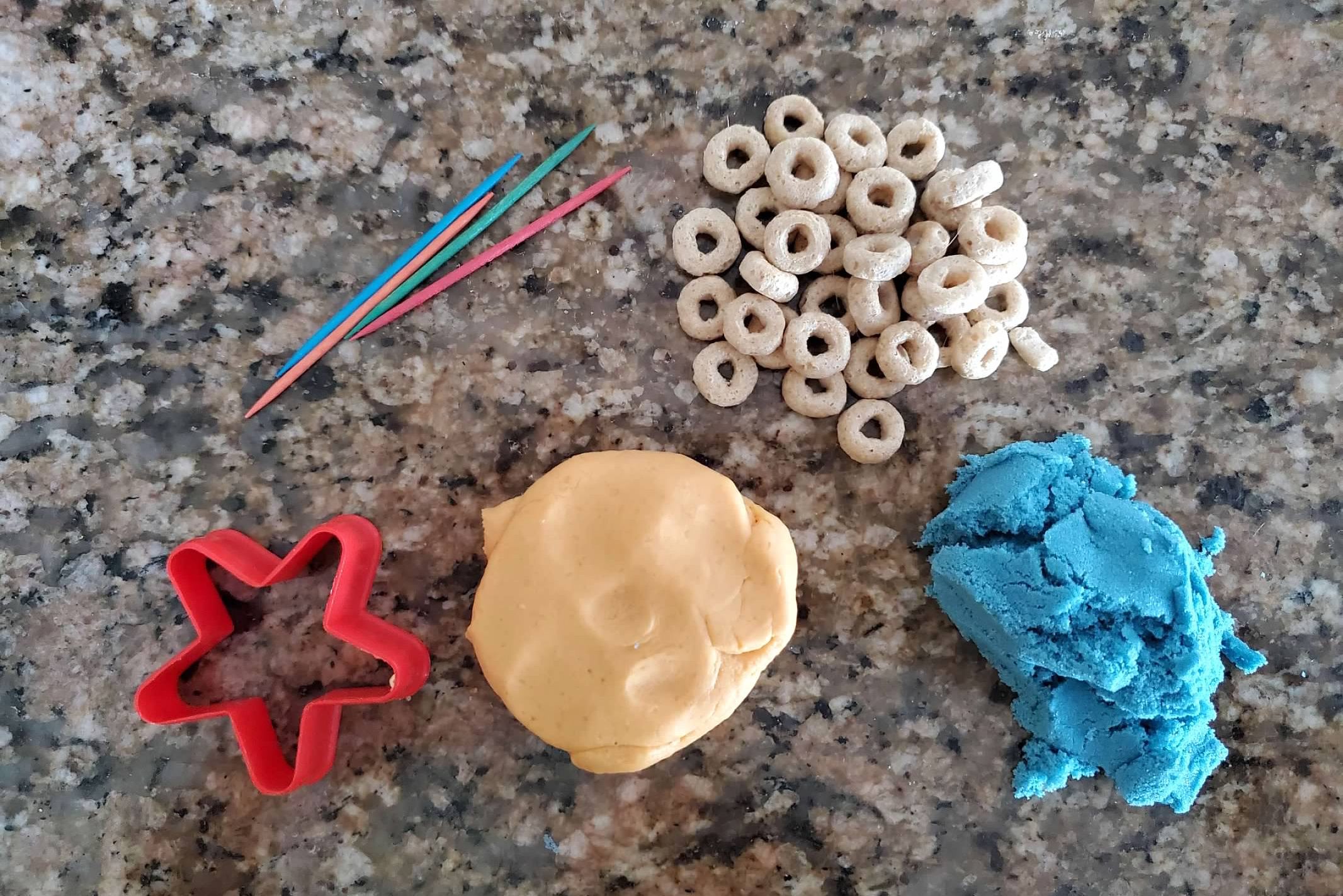
When my son’s occupational therapist recommended that he have a “sensory diet,” my mind immediately went to those beautifully organized bins filled with colored rice that I see on Etsy, Pinterest, and Instagram. Yes, I had seen them, saved the pages, and considered buying them or making them myself. But I couldn’t quite bring myself to make it happen.
I would spend all that money on rice… that would end up in my vacuum cleaner. I would work to dye rice… and I’m sure my hands would end up more dyed than the rice.
But after speaking further with the OT and other members of my son’s Early Intervention team, I realized that sensory play doesn’t need to be fancy or expensive.
My son is on the autism spectrum, and we find he is best regulated when he has sensory play multiple times a day. So what we put together was a cloth bin from the dollar store that has a few sensory play items in it. No elaborate tackle box or themed plastic container. Just a bin.
In that bin, we have a few different types of play dough. It varies from small containers of the classic Play-Doh to homemade play dough with plastic spiders and bugs in it. Once I came to terms with the actual shelf life of play dough (much shorter than I thought), I started buying or making less of it at once. Two or three small containers at a time is all we need. Throw in a few small cookie cutters for added fun.
My next addition was glitter slime. (I do not recommend this if your child likes to put things in his mouth.) You can make your own (perfect if there is another child in the house who is in that slime-making phase) or buy a small container of it. Is slime the same general idea as the play dough? Yes, but it provides a different sensation than the dough, often feeling cooler, which adds another element to the play. (We have also substituted kinetic sand in place of slime, but it is not as much of a hit as slime is. Plus we have another sand option that works better — see below.)
Another entry into the bin was an unexpected hit: colored toothpicks. We had a container of them, and they spilled on the table one day, which was a total bummer. But then my kids started playing with them and were occupied for an hour. It was a loss to my pantry but a gain to my sanity.
My son loves lining toothpicks up, picking them up from a pile, and sticking them in the slime or play dough. Now that he is older, he also loves putting them through the small holes of the toothpick container. Concerned about the small size of the toothpicks? Popsicle sticks work as well. If you add an emptied and cleaned Dunkin’ Donuts iced coffee cup, it can be fun for kids to push popsicle sticks through the lid.
The last element of our simple but effective sensory bin? Cheerios. Use a food processor or hand blender to turn them into sand. If you have leftover baby formula scoops, they make awesome Cheerio sand shovels.
An effective sensory bin doesn’t need to cost a lot of money or be complicated. It simply needs items that are safe and fun to play with in multiple ways. It’s easier than you think!













